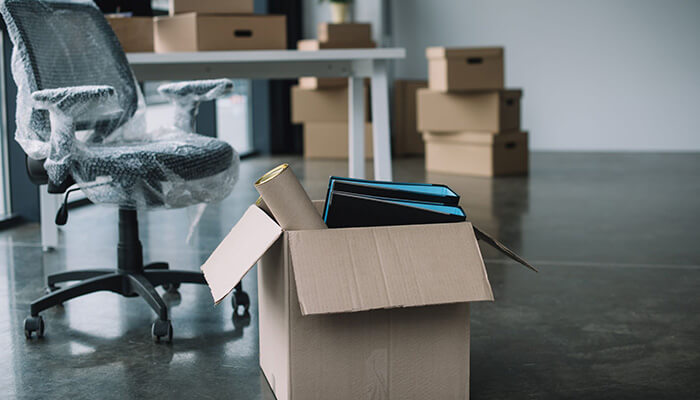Moving offices can be a stressful and daunting task. Fortunately, with the right guide, it doesn’t have to be. With proper planning, organization, and resources, your office move can go off without a hitch.
Generally, whether you’re moving down the street or across town, relocating requires careful consideration of every aspect of the transition. There’s plenty to consider, from hiring a reliable commercial relocation company to establishing new connections.
So if you’re looking for advice on handling an office move, look no further. Read ahead as this article discusses each step and gives you all the information necessary for a stress-free and seamless transition into your new workspace.
Step-By-Step Office Moving Checklist
Moving to another office location can be an overwhelming and complicated process. This guide will provide a step-by-step checklist to make your move in order.
1. Create A Timeline
Developing an accurate timeline can help keep your team organized and on track throughout the moving process.
The first thing you should do when creating a timeline is set realistic deadlines that allow enough time for each task to be completed properly. For example, if you need to order new furniture or equipment, it may take up to six weeks to deliver them. Keep this in mind when setting deadlines so there are no surprises down the road.
Take a few hours to sit down with your team and discuss timelines and expectations and who will be responsible for what tasks. This will help alleviate any potential confusion or miscommunication further down the line when it comes time to start packing up and relocating your office items.
2. Notify Everyone Regarding The Office Relocation
This critical step will help ensure everyone is informed and prepared for the transition. Start by meeting with key personnel, such as managers and department heads. Give them an overview of the move, including timelines and expectations. Be sure to answer any questions they may have.
Next, draft a formal announcement letter or email outlining the details of the move to distribute to all staff members. Ensure it includes information on how employees can contact human resources (HR) and other departments during the process.
To ensure no one falls through the cracks in communication, set up regular meetings throughout the transition period to update everyone involved about progress toward completion. Keeping everyone informed shows respect for their time and participation in the project, which ensures clarity regarding the preparation and execution stages of your office move.
3. Conduct An Ocular Inspection
Ensure that all members of your team involved in the move will attend this tour. Everyone needs to get a sense of the area and ask questions about any concerns regarding their workspace.
When visiting, consider what improvements must be made before officially moving in. Do you need additional lighting or furniture? Are there any health and safety issues that should be addressed? Even if these things are unnecessary now, note them so you can plan when moving day arrives.
Be sure to take lots of photos during your tour as well. This way, you’ll have visual reminders of how everything looked before anything was moved in or changed around. Additionally, use this opportunity to start planning where each department should go within the new space, making organizing on moving day much more manageable.
4. Assess Your Moving Costs
Moving an entire office can be expensive, and many factors must be considered. Planning thoroughly to ensure a successful move while staying within budget is essential.
First, calculate the number of employees who need to be relocated and whether they will require any additional furniture or equipment for their new workspace. Gather quotes from moving companies, and compare prices based on services offered.
Once you have estimated all possible costs associated with the move, create a detailed budget, including potential expenses, such as employee travel costs, overtime wages, storage fees, insurance premiums, etc. This way, you can track your spending more closely and adjust where necessary. Additionally, factor in extra money if unexpected issues arise during the move.
5. Hire Professional Cleaners
Hiring professional cleaners is also beneficial when preparing your new office space for a successful transition. Cleaners can help ensure that all surfaces are properly sanitized before anything else is brought into the building. Plus, hiring professionals eliminates the need for employees to take on this task themselves, saving time while still guaranteeing a clean environment.
6. Establish A Relocation Committee
Assigning specific tasks and creating a relocation committee when planning an office move is essential. This will help ensure that everyone works together toward the same goal of making a move successful. Assigning tasks should be done early so there is ample time to complete them.
The relocation committee should consist of key personnel at all organizational levels who can provide input into the moving process. It’s beneficial to have someone with experience on board and individuals familiar with old and new locations. Representation from different departments helps ensure that all voices are heard throughout the transition.
Once established, this committee should regularly review progress and make necessary changes. They must also stay updated on deadlines and regulations related to relocating an office space to keep everything running smoothly during a potentially stressful time.
7. Make An Inventory List
Start by listing all items that need to be moved, including furniture, equipment, and files. This will help you keep track of everything during the moving process and ensure everything is noticed and found.
Once you have your list created, start going through it one item at a time and decide what needs to stay for the move and what can be discarded or donated. Non-essential items such as old furniture and outdated technology should not take up valuable space during the move, so consider removing them before packing begins. Donating these items to charity can also provide some tax benefits for your business.
Organizing ahead of time will save you considerable stress when moving into your new office space. Make sure everything is well labeled with its corresponding item number on the inventory sheet, as this will help facilitate easy identification once each box arrives at its destination.
8. Hire Reputable Movers And Packers
Once you have determined the type of move you need, it’s time to hire movers and packers. Here are some tips for finding reputable professionals who can help with your office move:
- Ask friends or colleagues for reliable mover referrals.
- Check online reviews to check the moving company’s reputation.
- Ensure the mover is licensed, insured, and bonded before hiring them.
- Request multiple quotes from different companies to compare pricing and services.
Before signing a contract with a mover, read all paperwork thoroughly, and ask questions about anything that needs clarification. Once you find a reputable mover, ensure everyone understands their responsibilities, including packing materials required, how items will be loaded onto the trucks, insurance coverage, delivery dates, etc.
9. Ensure That The Utilities Are Functional Before The Move
Before the office move, ensuring all utilities are set up and working is important. This includes electricity, gas, water, and internet access for computers and telephones. Additional services may need to be arranged depending on where you are located.
If you plan and contact utility companies before your scheduled move date, getting them connected will go much more smoothly. Keep in mind that late fees may be charged to you if an installation date has been missed due to a lack of preparation.
Furthermore, comparing different providers before selecting one for any given service is best. Shopping around lets you find competitive rates that won’t break the bank or cause budgeting issues.
10. Moving Day
The next step in a successful office move is to pack up and move the items that are not essential for day-to-day operations, followed by the ones needed. Ensure all furniture, equipment, records, supplies, and other belongings are packed into boxes or crates.
Before moving any items out of the current building, ensure they’re adequately safeguarded against damage while in transit. Protective blankets should cover furniture, electronics should be sealed in bubble wrap, and fragile objects should be placed inside sturdy cartons. Don’t forget to keep important documents—such as contracts, leases, and licenses—together in one place so they don’t get lost during the relocation process.
Once everything has been safely secured and transported to the new space, unpack each item carefully according to your inventory list and label them accordingly. Then take some time to arrange them into their designated rooms before resuming regular business activities at the new office location.
Conclusion
It’s been a long process, but your hard work has paid off. With the right plan and plenty of preparation, you’ve ensured everything went smoothly on moving day.
And now that all the boxes are unpacked and the furniture is set up, take some time to reflect on what you have achieved. This is a challenging task; it takes dedication and perseverance throughout the process. You should be proud of yourself for ensuring this vital transition was as successful as possible.
So enjoy this moment; you’ve earned it! Whether you’re excited about the new space or feeling nostalgic about leaving behind the old one, relish this experience before returning to business as usual.



